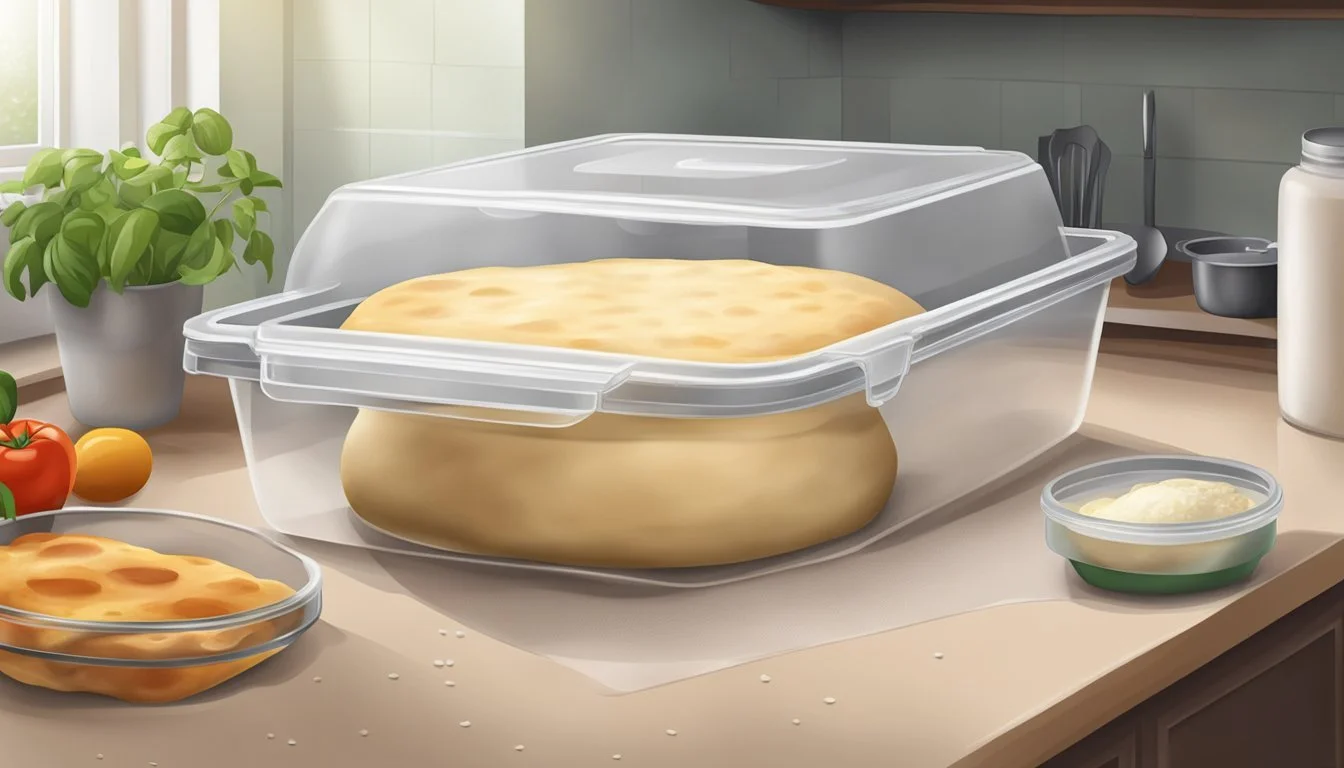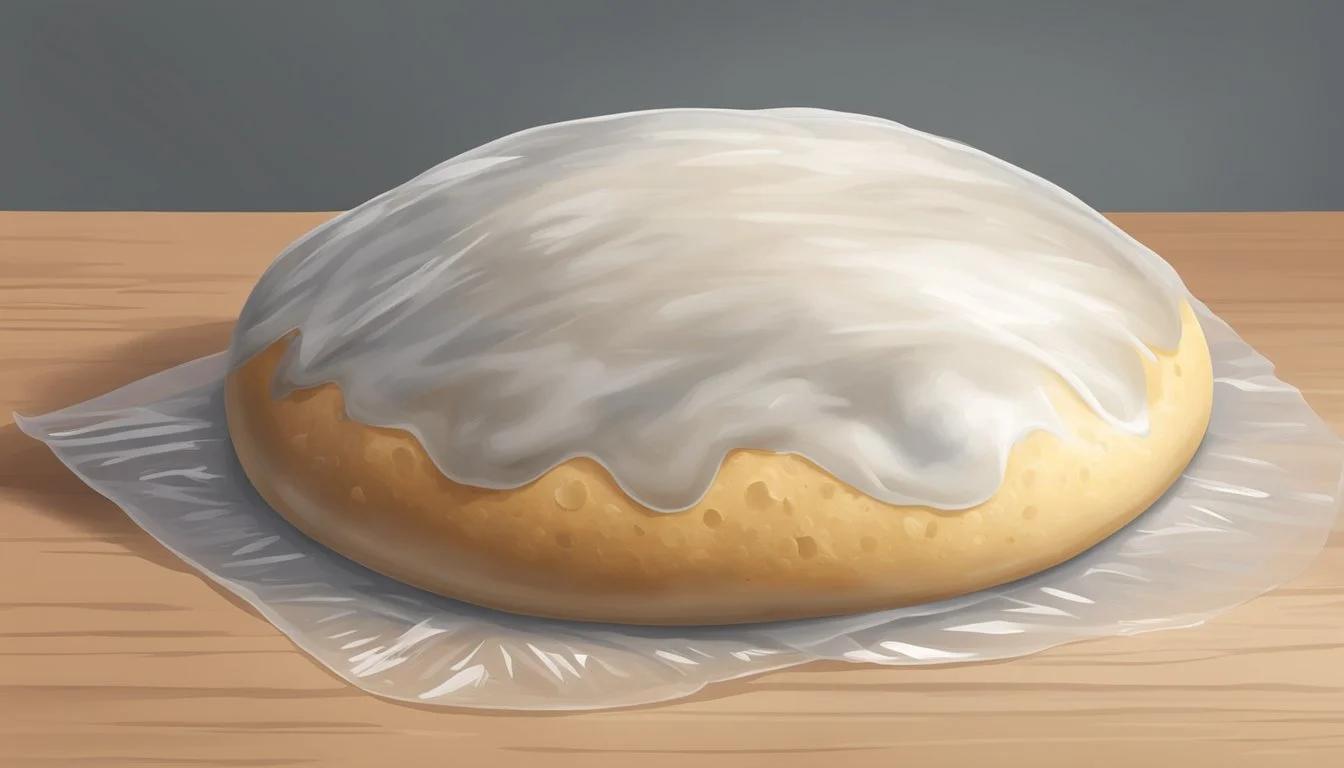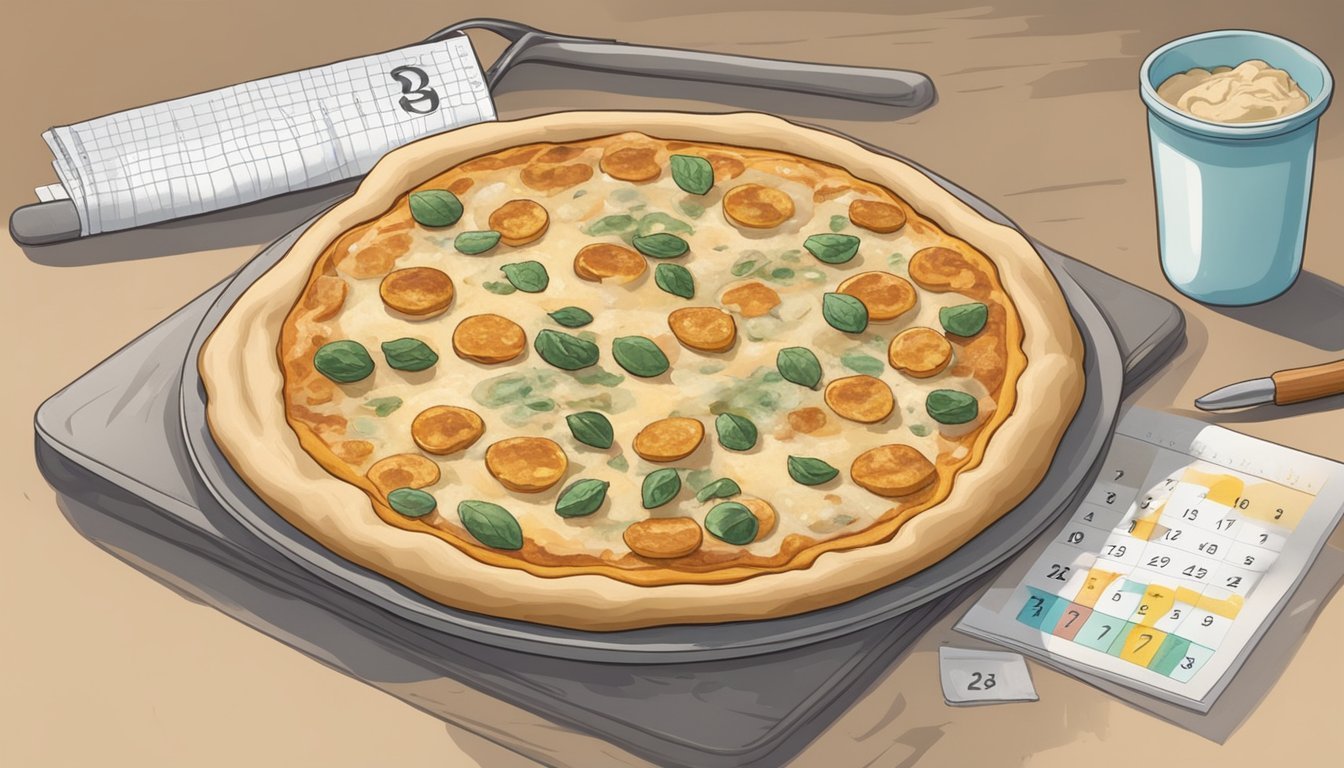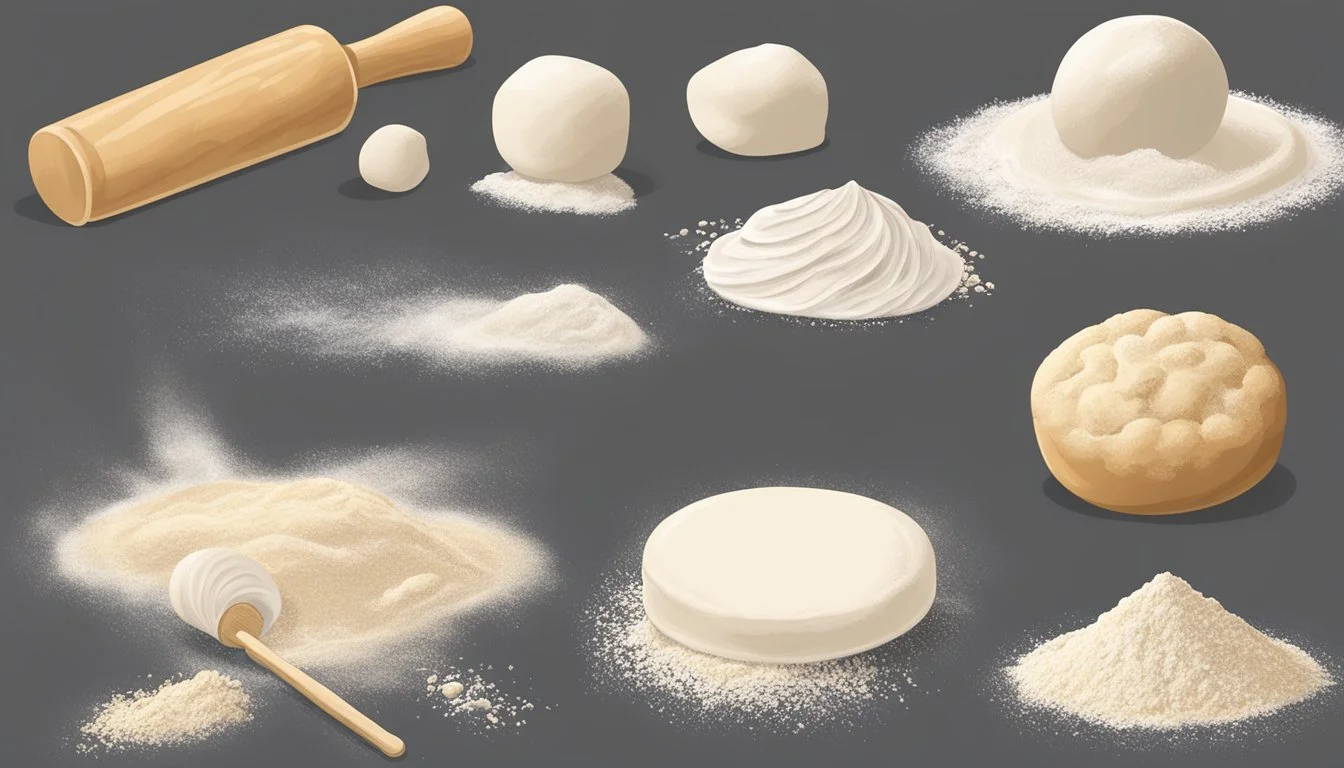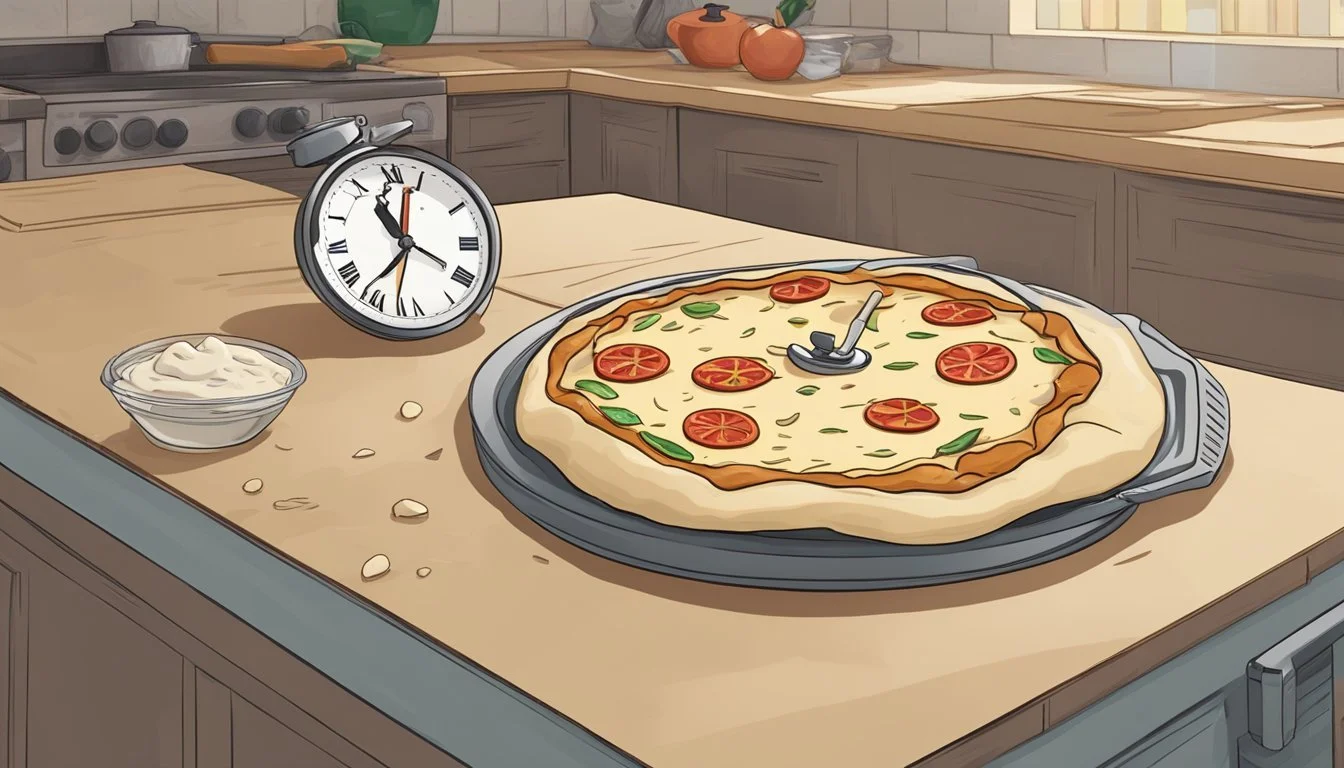How Long Does Pizza Dough Last?
Shelf Life and Storage Tips
The shelf life of pizza (What wine goes well with pizza?) dough is a key consideration for anyone looking to enjoy this versatile base for a variety of toppings. The longevity of pizza dough depends largely on the storage conditions and whether the dough is homemade or commercially produced. Generally, homemade pizza dough can be kept in the refrigerator for 2 to 4 days before the yeast activity begins to decline, affecting the dough's ability to rise and potentially altering its texture and flavor.
Commercially made pizza dough often contains preservatives that extend its shelf life. When stored in the refrigerator, it could last up to 2 weeks, though for optimal quality, it is advisable to use it within the first week. If pizza dough is frozen, its shelf life extends significantly. Properly stored in a freezer, it can maintain quality for 2 to 3 months, and potentially longer, although quality might deteriorate after four months. It's essential to store it in an airtight container or freezer bag to avoid freezer burn, which can affect its texture and taste.
Recognizing when pizza dough has gone bad is also important. Spoilage is typically evident by a sour smell, gray color, or the presence of any gray spots, which are clear indicators that the dough should not be used. The storage temperature and the amount of yeast in the recipe also play central roles in the dough's lifespan. A consistent, cold temperature in the refrigerator is critical for extending the life of the dough, while recipes with higher yeast content may ferment more rapidly, reducing the dough's usability window.
Understanding Pizza Dough
Pizza dough is a simple yet sophisticated mixture at the heart of many beloved recipes. It primarily consists of flour, water, yeast, and salt. Often, olive oil is added for its flavor and to improve the dough's texture.
The fermentation process plays a crucial role in giving pizza dough its characteristic flavor and texture. Yeast, a key ingredient, feeds on the sugars present in flour, producing carbon dioxide and alcohol as byproducts. This release of gas creates air pockets and contributes to the dough's rise.
Flour is the structure; it contains proteins that form gluten when mixed with water. Gluten strands give dough its elasticity and strength, essential for a light and chewy crust.
Water activates the gluten and assists in the incorporation of ingredients, creating a cohesive dough. The amount of water used can affect the dough's final texture, with higher hydration leading to a lighter, airier crust.
Salt is essential for flavor but also tightens the gluten network, making the dough more resilient during the stretching process.
Here's a glance at pizza dough's fundamental components:
Flour: The base, contributing to gluten development
Water: Activates gluten, influences dough hydration
Yeast: Initiates fermentation, impacts the rise and flavor
Salt: Enhances taste, strengthens gluten structure
Olive Oil (optional): Adds flavor, affects texture
Fermentation is crucial, as it not only affects the crust's texture and taste but also impacts its digestibility. Adjusting fermentation times can lead to different flavors and textures. Short, room-temperature fermentations yield mild flavors, while long, cold fermentations develop deeper, more complex tastes.
The resulting dough should exhibit a balance of strength and flexibility, allowing it to be shaped into the perfect foundation for a variety of pizzas.
Fresh Dough Shelf Life
The shelf life of fresh pizza dough significantly depends on storage conditions which affect its texture, taste, and ability to rise. Discerning between homemade and store-bought varieties is crucial as they each have their own preservation characteristics.
At Room Temperature
Fresh pizza dough should not be stored at room temperature beyond a few hours, ideally less than 2 hours, as it can quickly over ferment, leading to a decline in texture, taste, and rise. Airtight containers can somewhat prolong freshness but will not prevent the inevitable spoilage due to yeast activity and potential bacterial growth.
In the Refrigerator
When refrigerated, fresh pizza dough maintains its quality for 1 to 2 days. Keeping the dough in an airtight container or wrapped tightly in plastic prevents drying out and helps retain both its moisture and freshness. Store-bought dough, often containing preservatives, can typically last in the fridge for 2 to 4 days. The cold environment slows down yeast activity, preserving the dough's texture and ability to rise, but using it as soon as possible ensures the best taste and smell.
Homemade vs. Store-Bought
Homemade pizza dough, lacking commercial preservatives, has a shorter shelf life. It maintains its peak quality for 24 to 48 hours when stored properly in the refrigerator. Store-bought dough can last longer due to stabilizers and preservatives, giving it a shelf life of up to a week under refrigeration. However, despite the extended shelf life, using store-bought dough sooner rather than later is advisable to ensure optimal taste and texture.
Freezing Pizza Dough
Freezing pizza dough is a convenient method to extend its shelf life, ensuring that a home cook can preserve the dough for future use. It's crucial to follow proper freezing and thawing techniques to maintain dough quality.
How to Freeze
To freeze pizza dough, one must first ensure it has risen adequately after the yeast is activated. Dough should then be divided into portions, usually forming balls that are suitable for individual pizzas. It is recommended to lightly coat these dough balls with nonstick cooking spray or a thin layer of oil to prevent freezer burn. They should then be placed in a resealable plastic bag or wrapped tightly in aluminum foil. Labels with the date of freezing can help keep track of how long the dough has been stored.
Thawing Practices
When one is ready to use frozen pizza dough, the thawing process should be approached with patience to preserve its quality. The optimum method is to transfer the dough from the freezer to the refrigerator, letting it defrost overnight. If a quicker method is needed, the dough can be left at room temperature for several hours. However, the dough should remain covered to avoid drying out.
Impact on Quality
The freezing process doesn't kill the yeast but simply puts it in a dormant state. Upon thawing, the yeast will become active again, although there may be a minor loss in its leavening power due to ice crystal formation. The quality of the pizza dough can remain high if used within two to three months of freezing, wherein one might notice only a slight difference in taste or texture. Beyond this period, while still safe to consume, the dough’s quality may degrade.
Signs of Spoilage
When assessing pizza dough for spoilage, one must examine its visual appearance, texture, smell, and taste after baking. These indicators can reveal whether the dough has gone bad and should not be consumed.
Visual Appearance
Pizza dough's color is a telltale sign of its condition. Fresh dough typically exhibits a white or beige hue. Spoiled dough may appear grey or contain flecks of grey, often indicative of bacterial growth. Additionally, mold presence is identified by green or black spots, and it signifies the dough is compromised and should be discarded immediately.
Texture and Smell
The texture of pizza dough should be smooth and pliable. Dryness or a slimy texture can indicate spoilage. A slimy feel is a sign of bacterial overgrowth, such as E. coli, which poses a risk for food poisoning. One should also note the odor of the dough. An off or sour smell is another clear indicator that the dough's quality has degraded due to spoilage.
Taste After Baking
Although visual and olfactory inspections are critical, the taste of the dough after baking should only be considered if the dough passes the initial checks for spoilage. A sour taste can indicate that the dough has already gone bad, and it should not be consumed to avoid food poisoning. If the dough tastes off, it's best to err on the side of caution and throw it away.
Safe Storage Tips
Proper storage of pizza dough is crucial for maintaining its freshness and extending its shelf life. Attention to temperature and choice of container are key factors to consider.
Temperature Considerations
Storing pizza dough at the correct temperature is vital. For short-term storage, refrigeration is the best option—it slows down yeast fermentation and thus extends the dough's usability. Ideally, the refrigerator temperature should be set below 40°F (4°C), with the optimum being between 32°F and 36°F (0°C to 2°C). If someone plans to use the dough within a day or two, keeping it in the fridge is suitable. For longer storage, freezing the dough is advisable, which can preserve its quality for up to three months.
Refrigerator: 1–2 days (optimal quality and texture retention)
Freezer: Up to 3 months (ideal for extended storage while minimizing quality loss)
Container and Wrapping
The storage container's role cannot be overstated when it comes to storing pizza dough. An airtight container is imperative to prevent the dough from absorbing odors and to keep moisture levels stable. A practical method consists of lightly coating the dough in oil, covering it with plastic wrap, and then sealing it within the container, ensuring that there's enough space for the dough to rise if needed.
Fridge:
Dough should be placed in a large, clean airtight container.
Covering the dough with plastic wrap before placing it in the container can provide additional protection against drying out.
Freezer:
Wrap the dough in plastic wrap and then place it into a freezer bag to protect against freezer burn.
Labeling the bag with the date of storage helps to keep track of its shelf life.
Health Risks of Expired Dough
When pizza dough expires, the primary concern is the growth of harmful bacteria and mold, both of which pose significant health risks to individuals. It's critical to recognize the dangers of these contaminants to ensure the safety of pizza dough consumption.
Harmful Bacteria and Mold
The lack of freshness in expired dough can lead to the development of harmful bacteria, such as E. coli, and the presence of mold. Safe edible pizza dough should be free from dark spots or discolorations, which are often indicative of mold. Some bacteria can survive the baking process, so even if expired dough is cooked, it does not guarantee that all bacteria are killed, making it unsafe to eat.
Spoilage Indicators: Discoloration, unusual odors, and a slimy texture.
Risks: Ingesting mold or bacteria from spoiled pizza dough can lead to health complications.
Symptoms of Food Poisoning
Individuals who eat expired pizza dough contaminated with harmful bacteria may experience symptoms of food poisoning. Symptoms can range from mild to severe and include:
Gastrointestinal Distress: Nausea, vomiting, diarrhea, and abdominal pain.
Onset: Symptoms can appear within hours or may be delayed by days after consuming spoiled dough.
Food poisoning should be taken seriously, and anyone experiencing severe symptoms should seek medical attention.
Extending Dough Life
Effective pizza dough preservation relies on understanding how ingredients and processing techniques influence its longevity. Here's a deeper look into how the quality and methods applied to the dough can extend its usable life.
Ingredients Impact
Water: It's crucial for hydration but excess water can shorten dough life due to increased bacterial activity. A balance must be struck to ensure the dough remains hydrated without being a breeding ground for spoilage.
Flour: High-protein flour contributes to a longer shelf life due to its ability to retain structure over time.
Yeast: The amount of yeast used can affect how long the dough will last. Less yeast prolongs dough life as it slows down fermentation.
Eggs and Milk: These can enrich the dough but may decrease its longevity due to their perishable nature.
Flavor: Ingredients added for flavor, like sugar or salt, can also impact shelf life. Sugar feeds yeast, quickening fermentation, while salt can help control it.
Kneading and Rising Techniques
Kneading: A consistent kneading process develops gluten structure, which is essential for the dough's ability to rise properly and maintain its texture during storage.
Rise Properly: Allowing the dough to rise in a cool environment lengthens its life by slowing yeast activity. For example, dough can rise slowly in the refrigerator, extending its usability while developing flavor.
To summarize, attention to ingredient quality and quantities, along with a controlled kneading and rising process, are key factors in extending the life of pizza dough.
Preparing Dough for Baking
When making pizza at home with store-bought dough or sourdough, one should ensure that the dough is prepped correctly for an excellent outcome. The process begins with bringing the dough to room temperature, which typically takes about 30 minutes for a ½ pound ball of dough. It's crucial because cold dough won't stretch easily and can tear.
Steps to Prepare Pizza Dough for Baking:
Room Temperature Rise: After refrigeration, let the dough rest covered at room temperature.
Timing: Approximately 30 minutes for ½ pound dough.
Oven Preheating: Preheat your oven to the optimal baking temperature prior to cooking.
Temperature: 450°F initially for pre-baking, then increased to 500°F for the final bake.
Dough Shaping: Gently stretch the dough into the desired shape, taking care not to tear it.
Initial Baking: Bake the dough without toppings ("naked pizza dough") to start the cooking process.
Duration: 7 minutes at 450°F.
Olive Oil Application: Brush olive oil on the dough's perimeter to achieve a golden crust.
Topping Addition: After the initial bake, add sauce, dried herbs, cheese, and other toppings.
Final Baking: Place the topped dough back into the oven for the final bake.
Completion: Look for a golden-brown crust and bubbling cheese as indicators of doneness.
By carefully following these steps, one can make a delicious pizza with a golden crust and perfectly cooked toppings. It’s important always to adhere to recipe-specific temperatures and timings to ensure the best results.
Deciding When to Use or Discard Dough
One must carefully assess various factors to determine the proper time to use or discard pizza dough. The freshness of dough significantly impacts the quality of the finished pizza, be it homemade or commercial.
Fresh Dough: Typically, fresh homemade pizza dough lasts 2 to 4 days in the fridge. For the best quality, one should aim to use it within this timeframe.
Commercial Dough often has preservatives that extend its shelf life up to four months when stored properly in a freezer.
Raw Dough Detection:
Smell: Fresh dough should have a pleasant, yeasty aroma. If the dough emits a sour or off smell, it's a sign to discard.
Texture: The dough should be pliable but hold its shape. If it's unusually sticky, slimy, or dry, this indicates spoilage.
Color: Look for uniformity. Discoloration or signs of mold mean the dough is bad.
Expiration Date: Always consider the label's expiration date as a guideline, but inspect the dough as it may spoil before the indicated date.
High-Quality Pizza: For a pizza with optimal flavor and texture, one should use dough that is neither over-proofed nor expired.
Dough Type Fridge Life Freezer Life Homemade Dough 2-4 days 2-3 months Commercial Dough Up to 4 months N/A
In any case, when one detects any dubious characteristics in their dough, it's prudent to err on the side of food safety and discard it rather than risk an unsatisfactory culinary experience.

